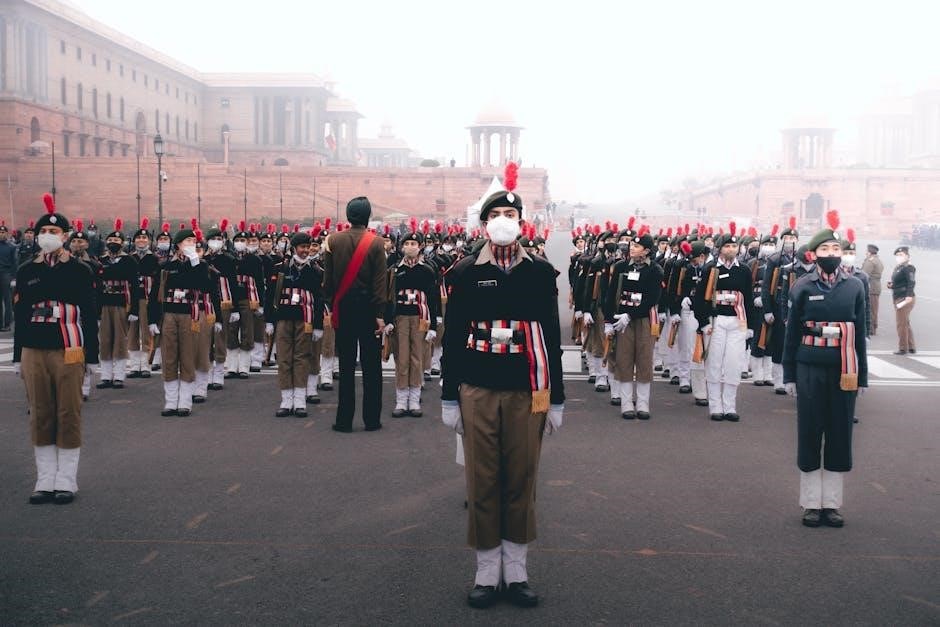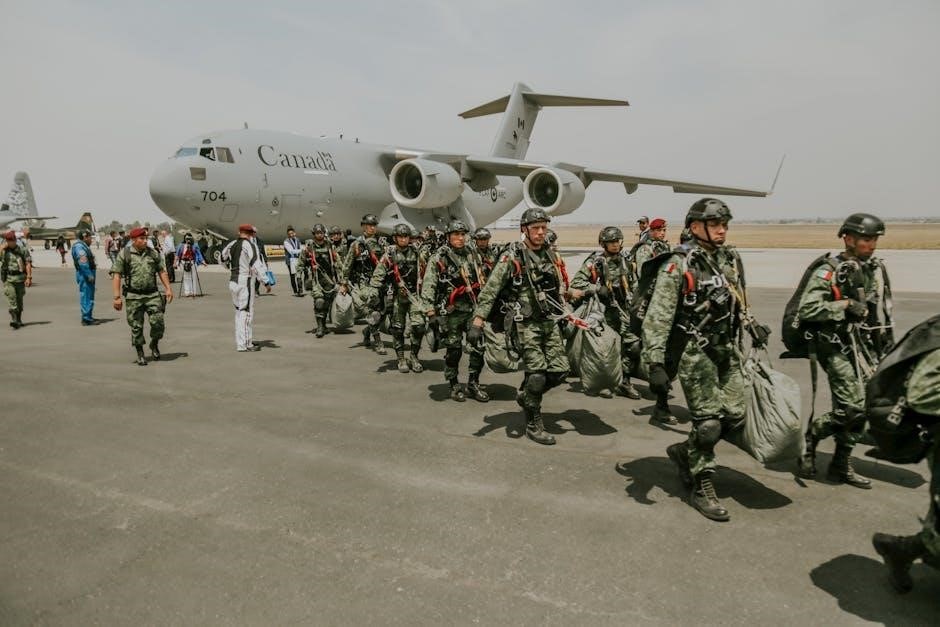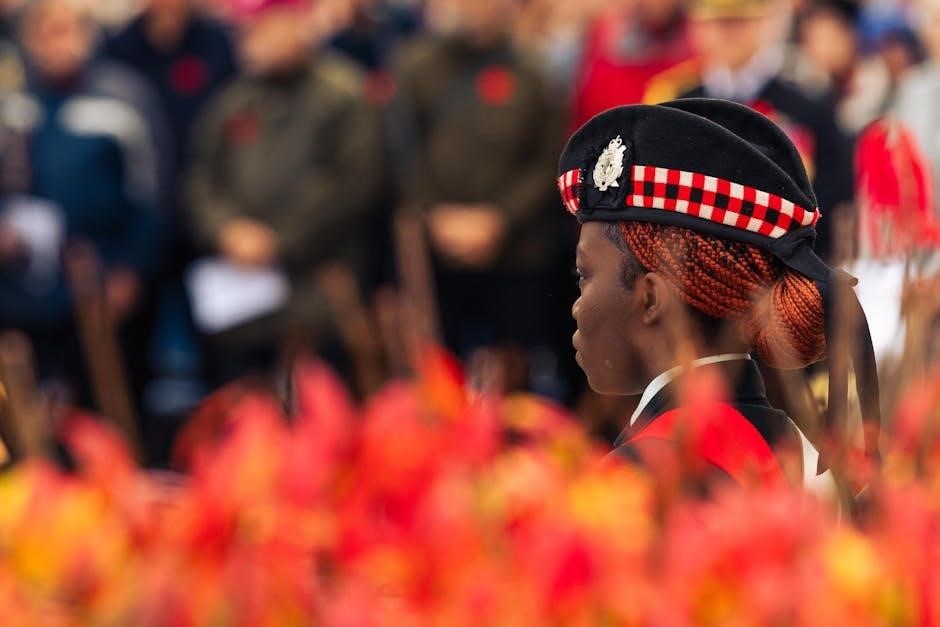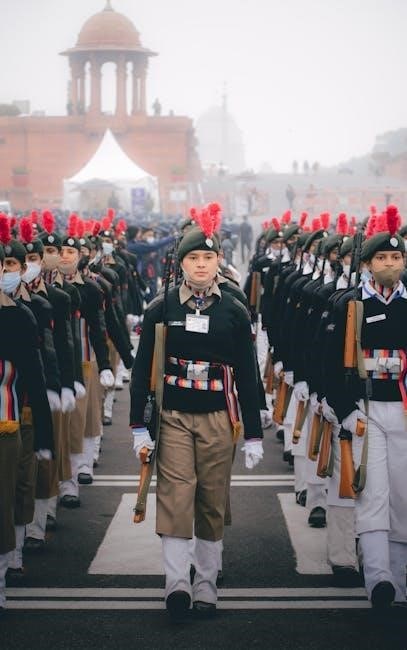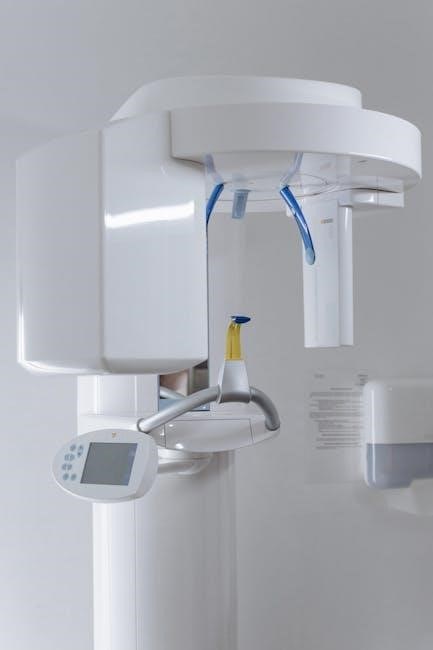William Golding’s Lord of the Flies is a timeless tale of survival and human nature. Stranded on a deserted island‚ British schoolboys descend into chaos‚ revealing society’s collapse without adult guidance. The novel explores themes of power‚ fear‚ and civilization‚ with symbols like the conch shell representing order. Its enduring appeal lies in its stark portrayal of humanity’s darker instincts‚ making it a classic of modern literature.
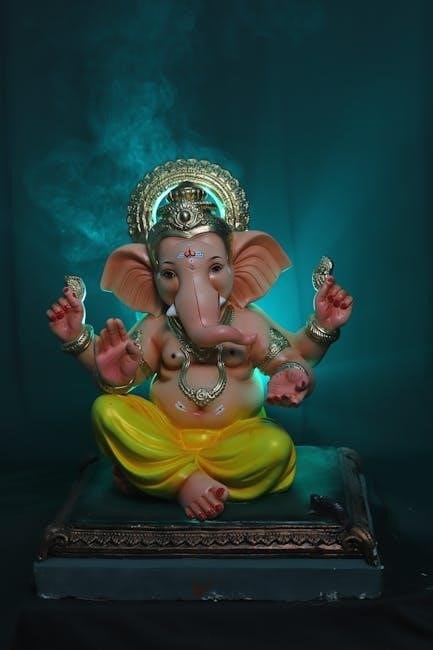
Plot Summary
British schoolboys stranded after a plane crash attempt to build a utopia but descend into chaos as power struggles emerge between Ralph and Jack‚ with the conch shell symbolizing their failed civilization.
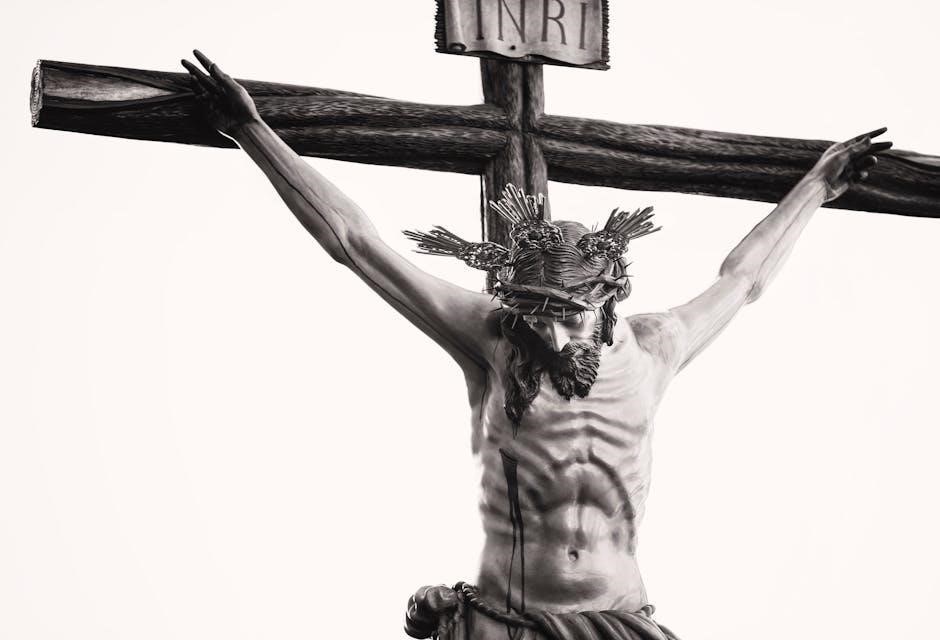
Setting
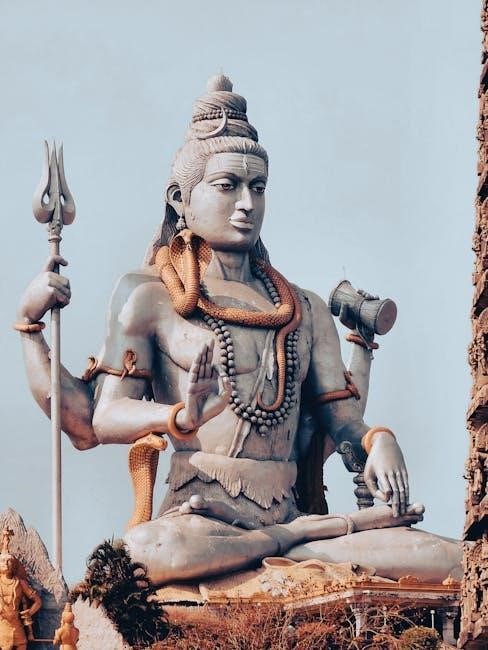
The story unfolds on a remote‚ uninhabited island in the Pacific Ocean during an unspecified war. The island‚ with its dense jungles‚ rocky terrain‚ and sandy beaches‚ becomes the isolated world of the British schoolboys. The absence of adult supervision creates a vacuum of authority‚ allowing the boys’ true natures to emerge. The island’s beauty contrasts with the darkness of human behavior‚ serving as a microcosm of society. Key locations include the lagoon‚ the mountain with the signal fire‚ and the castle rock‚ each playing a significant role in the boys’ struggles for power and survival. The setting isolates the characters‚ forcing them to confront their primal instincts and the collapse of civilization.
Main Characters
Ralph‚ the protagonist‚ is a fair-haired‚ confident boy chosen as the group’s leader. He represents order and democracy‚ striving to maintain civilization. Jack Merridew‚ the antagonist‚ is aggressive and power-hungry‚ leading the hunters and eventually turning against Ralph. Piggy‚ the intelligent and rational voice‚ lacks physical strength but provides wisdom. Simon‚ the quiet and introspective boy‚ uncovers the truth about the “beast” but is tragically killed. Other notable characters include the choirboys‚ who follow Jack‚ and the littluns‚ the youngest boys who symbolize innocence. These characters drive the plot‚ embodying the conflict between savagery and order. Their distinct personalities shape the island’s descent into chaos‚ highlighting human nature’s darker aspects.
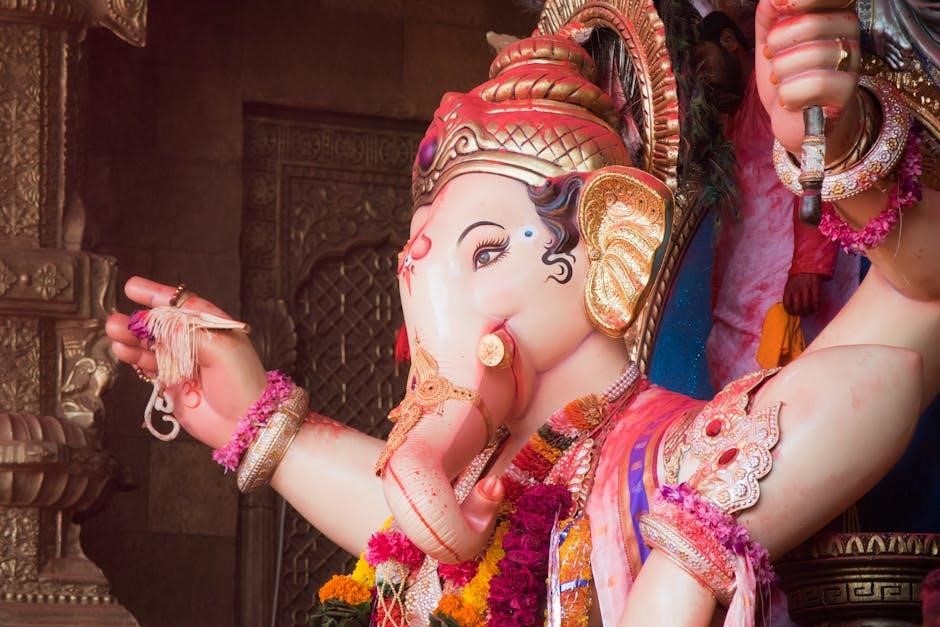
Key Plot Points
The story begins with a plane crash during a war‚ leaving British schoolboys stranded on a deserted island. Ralph‚ elected leader‚ tries to maintain order‚ while Jack’s desire for power grows. The conch shell‚ a symbol of democracy‚ is used to call meetings. The boys’ fear of a “beast” escalates‚ causing division. Jack’s tribe hunts and kills pigs‚ offering one to the beast. Simon discovers the beast is a dead pilot but is killed before revealing the truth. Jack’s group steals Piggy’s glasses‚ leading to a tragic confrontation where Piggy is killed. Ralph is hunted by Jack’s tribe but is rescued when a naval officer arrives‚ ending the chaos and revealing the boys’ descent into savagery.

Themes
William Golding’s Lord of the Flies explores human nature‚ civilization vs. savagery‚ fear‚ and power dynamics‚ revealing how societal norms collapse without authority.
Human Nature
Lord of the Flies delves into the complexities of human nature‚ illustrating how innocence and savagery coexist within individuals. The boys’ descent from civility to primal behavior highlights the inherent duality of human beings. Initially‚ they maintain order and cooperation‚ but as fear and power struggles emerge‚ their true instincts surface. The novel suggests that without societal constraints‚ humans revert to primitive tendencies‚ driven by self-interest and survival instincts. This exploration challenges the notion of inherent goodness‚ revealing that human nature is shaped by environment and circumstance.
Civilization vs Savagery
The struggle between civilization and savagery is a central theme in Lord of the Flies. Initially‚ the boys attempt to maintain order‚ electing Ralph as leader and using the conch shell to ensure fairness. However‚ as the novel progresses‚ their civilized behavior erodes‚ and primal instincts take over. Jack’s obsession with hunting and power symbolizes the descent into savagery‚ while Ralph’s efforts to maintain order represent the fading grip of civilization. The novel illustrates how the absence of societal constraints leads to a reversion to primal behavior‚ highlighting the thin line between civility and savagery. This conflict ultimately defines the boys’ experiences on the island.
Fear
Fear plays a pivotal role in Lord of the Flies‚ driving the boys’ actions and decisions. The concept of the “beast” emerges early‚ symbolizing the boys’ deep-seated fears of the unknown. This fear escalates tensions and leads to irrational behavior‚ such as the hunt for the beast. Fear also motivates the boys to seek power and control‚ as seen in Jack’s aggressive leadership. As the novel progresses‚ fear becomes a tool for manipulation‚ with Jack using it to justify violence and maintain his authority. Ultimately‚ fear undermines the boys’ ability to reason and work together‚ contributing to the island’s descent into chaos. Fear is portrayed as a destructive force that exposes the darker aspects of human nature.
Power
Power dynamics in Lord of the Flies are central to the novel’s exploration of human nature. Jack Merridew’s desire for control and dominance drives the group’s descent into chaos. Initially‚ Ralph’s democratic leadership contrasts with Jack’s authoritarianism‚ but Jack’s charisma and manipulation gradually erode Ralph’s authority. The conch shell‚ a symbol of order‚ loses its power as Jack’s influence grows. Fear and violence become tools for maintaining control‚ with Jack’s tribe using intimidation and rituals to assert dominance. The novel highlights how power corrupts‚ as Jack’s obsession with hunting and leadership leads to moral decay. Ultimately‚ the struggle for power mirrors the collapse of civility‚ revealing the darker aspects of human ambition and control.

Symbolism
In Lord of the Flies‚ Golding uses symbols to explore themes of civilization and savagery. The conch shell represents order‚ while the beast embodies primal fear. The island itself symbolizes a microcosm of society‚ and the pig’s head‚ or “Lord of the Flies‚” signifies inherent evil. These symbols collectively reveal the darker aspects of human nature when societal constraints are removed.
The Conch Shell

The conch shell is a pivotal symbol in Lord of the Flies‚ representing order‚ democracy‚ and civilization. Found by Ralph‚ it is used to summon meetings‚ emphasizing its role in maintaining structure. The shell’s power lies in its ability to grant the right to speak‚ ensuring fairness and unity among the boys. As the novel progresses‚ the shell’s influence wanes‚ reflecting the erosion of civilized behavior. When Piggy’s shell is shattered‚ it symbolizes the collapse of democracy and the rise of chaos. The conch shell’s destruction marks a turning point‚ highlighting the boys’ descent into savagery and the loss of their moral framework. Its absence underscores the novel’s themes of societal decay and the fragility of human decency.
The Beast
The Beast is a central symbol in Lord of the Flies‚ representing the boys’ primal fears and the unknown. Initially‚ the littluns believe in a monster‚ sparking fear and paranoia. Jack’s hunt for the Beast symbolizes his desire for power and control‚ diverting focus from survival. The Beast becomes a justification for violence and savagery‚ as the boys sacrifice pigs and eventually Simon. The novel reveals the Beast as a dead parachutist‚ symbolizing the true horror: human nature’s darkness. The Beast’s evolution mirrors the boys’ descent into chaos‚ highlighting Golding’s exploration of humanity’s capacity for destruction and the blurred lines between civilization and savagery.
The Island
The Island in Lord of the Flies serves as both a setting and a symbol‚ representing isolation and the absence of societal constraints. Its lush‚ tropical environment initially appears idyllic‚ with abundant resources like fruit and fresh water. However‚ as the boys’ behavior deteriorates‚ the Island transforms into a place of fear and savagery. The lagoon‚ once a symbol of beauty and freedom‚ becomes a backdrop for violence and chaos. The Island’s isolation forces the boys to confront their true nature‚ revealing the darkness within. Its transformation mirrors the boys’ descent from innocence to savagery‚ highlighting Golding’s exploration of human nature’s fragility and the absence of civilization’s guiding hand.
Lord of the Flies
The term “Lord of the Flies” symbolizes the inherent evil within humanity‚ as revealed through the pig’s head impaled on a stake by Jack. This gruesome offering to the “beast” represents the boys’ descent into savagery and their primal fear of the unknown. Simon discovers the rotting head‚ which symbolizes the true nature of the “beast” as a manifestation of human darkness. The swarming flies around the head emphasize decay and corruption. This symbol serves as a pivotal moment‚ revealing the boys’ capacity for evil and their abandonment of civilized norms. It underscores Golding’s belief that humanity’s darker instincts are an inherent part of human nature‚ rather than a result of external influences.

Character Analysis
Ralph embodies leadership and civility‚ while Jack represents savagery and power struggles. Piggy symbolizes intelligence and morality‚ contrasting with the group’s descent into primal behavior‚ highlighting human duality.
Ralph
Ralph‚ the protagonist‚ is a fair-haired‚ twelve-year-old boy who embodies leadership and civility. Elected as the group’s leader‚ he initially represents order and democracy‚ using the conch shell to maintain unity. Ralph’s optimism and desire for rescue drive his efforts to build shelters and keep the signal fire alive. However‚ as the novel progresses‚ Ralph’s innocence fades‚ revealing his vulnerability and internal conflicts. His fear of the “beast” and struggle to assert authority highlight his growth from a naive boy to a more self-aware individual. Ralph’s ultimate realization about the true nature of humanity underscores his tragic journey in the novel.
Jack Merridew
Jack Merridew‚ the antagonist‚ is a power-hungry and aggressive boy who leads the choir. Initially‚ he supports Ralph but soon becomes consumed by his own desire for control and hunting. Jack’s obsession with killing pigs symbolizes his descent into savagery‚ and his leadership style contrasts sharply with Ralph’s democracy. He forms his own tribe‚ painting faces and embracing primal instincts‚ which further divides the group. Jack’s transformation highlights the conflict between civilization and savagery‚ as he prioritizes hunting and power over survival and rescue. His actions drive the novel’s tragic events‚ showcasing the dangers of unchecked ambition and the collapse of moral boundaries.
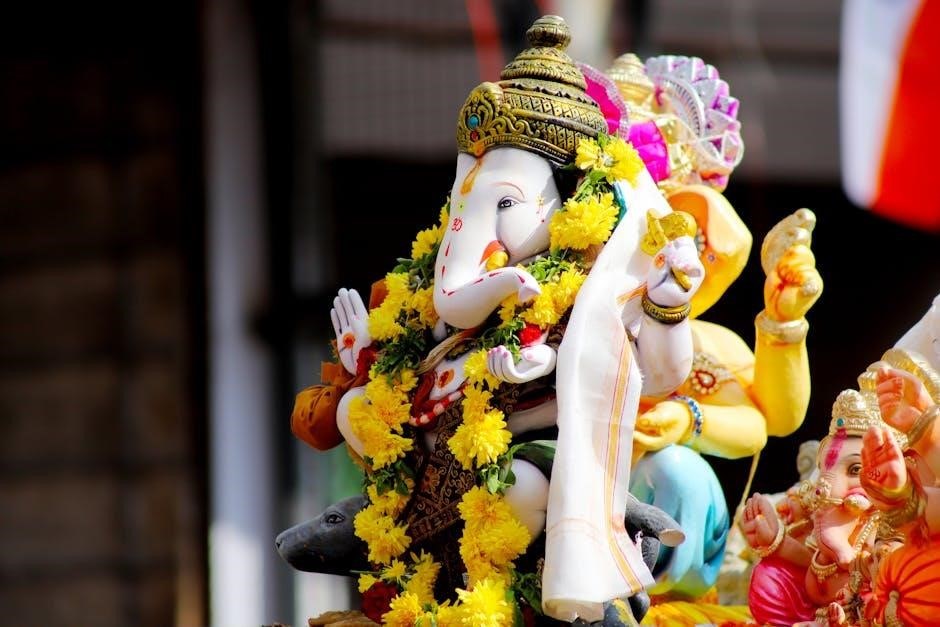
Significance
Lord of the Flies holds profound significance as a critique of human nature and society. It explores how quickly civilization collapses without authority‚ revealing primal instincts. The novel is a cautionary tale about the dangers of unchecked power‚ fear‚ and the loss of innocence. Its themes are universal‚ resonating across cultures and generations. As Golding’s first novel‚ it launched his career and earned him a Nobel Prize‚ solidifying its place in literary history. The book’s enduring popularity stems from its ability to provoke thought on human behavior‚ morality‚ and the fragility of social structures. It remains a vital text in academic and cultural discussions‚ offering insights into humanity’s darker tendencies. Its influence continues to inspire adaptations and analyses‚ ensuring its relevance in modern discourse.















